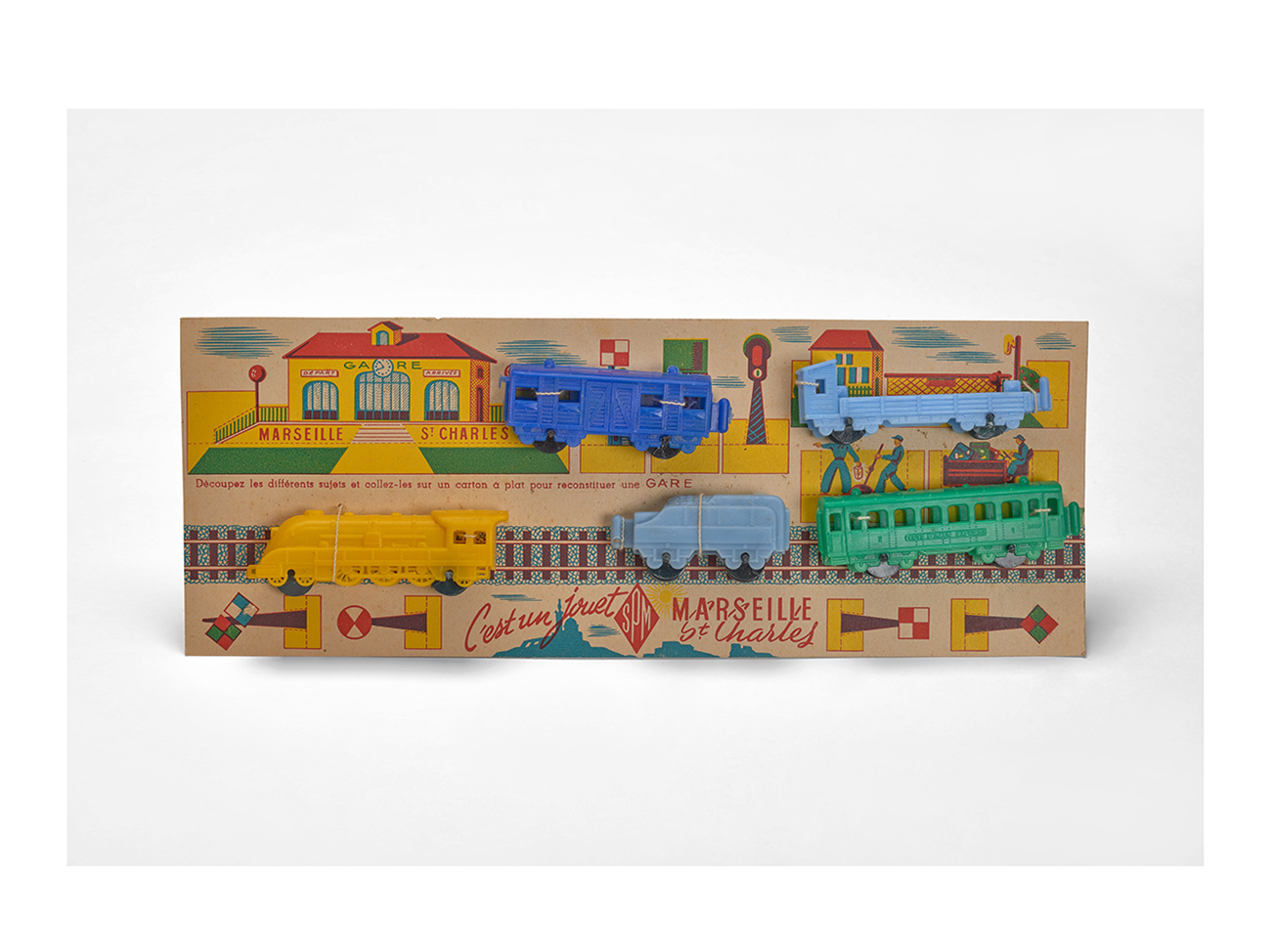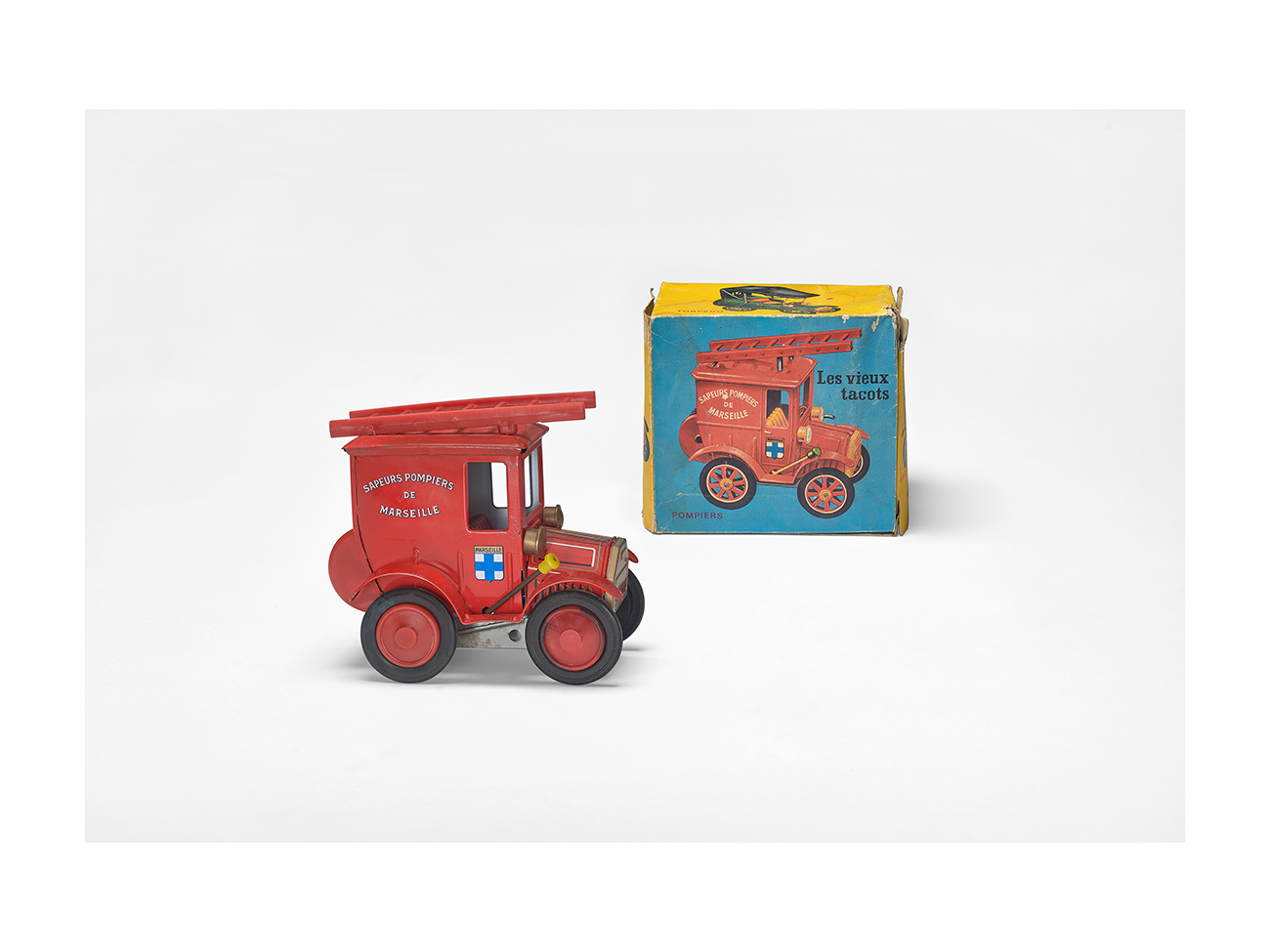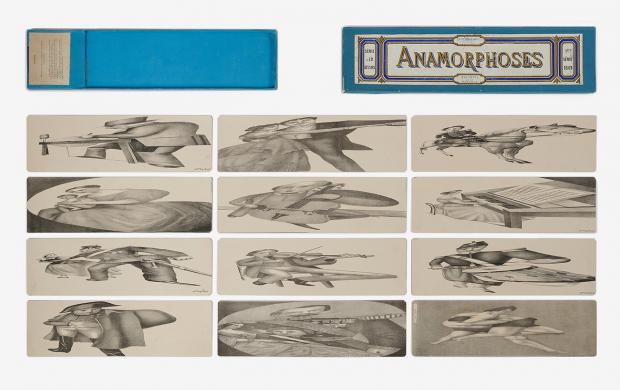Massilia Toy
A collection of toys from Marseille
Mucem, fort Saint-Jean—
Galerie haute des Officiers
|
From Thursday 5 December 2019 to Sunday 1 March 2020
Who remembers that in the past Marseille was once the epicentre of a small toy industry? Set against the backdrop of traditional soapmakers and the city’s oils and flour mills, the Phocaean city witnessed the development of several dozen toy manufacturing operations, like so many dream factories, whose wonderful products were intended to decorate Christmas trees and playgrounds: racing cars, fire trucks, planes, mechanical trains, optical games, dollhouse tea sets, spinning tops, costumes, pinball machines, dolls, electric guns, etc.
The exhibition “Massilia Toy, a collection of toys from Marseille” presents some 500 toys made in Marseille between the end of the 19th century and the end of the 1970s. This rare collection has been assembled by two passionate dealers, Christophe Feraud and Bruno Cirla, with the aim of keeping alive the memory of these small masterpieces created by local craftspeople and industrial facilities.
Guided by an extraordinary “Interplanetary Traveller”, the exhibition offers a playful discovery tour of these vintage “made in Marseille” toys through the various rooms of the Galerie haute des officiers of the fort Saint-Jean. In order to testify to the richness of this overlooked aspect of heritage, it also presents a selection of audiovisual archives, catalogues and advertisements. Also included are a reconstruction of a toy manufacturer’s workshop, as well as the recreation of the shop window of a famous brand, which should bring back memories for many Marseillais.
—Curation : Christophe Feraud et Bruno Cirla
—Scenography : Olivier Bedu – Struc Archi
—Catalogue edition Mucem
-
Interview with Bruno Cirla and Christophe Feraud, exhibition curators
-
Mucem (M.) The toys presented in this exhibition were all made in Marseille between the end of the 19th century and the end of the 1970s. So there really was a “Marseille” toy industry in the past?
Bruno Cirla and Christophe Feraud (B.C. & C.F.) Indeed. We were able to identify about 50 toy manufacturers, who were active in Marseille during this period. The first traces of toy making in Marseille date back to the end of the 19th century: they were handcrafted and mainly in wood. Metal arrived later, during the interwar period. The great expansion of toy making began with the end of the Second World War. In Marseille, most of the companies were small family businesses. The political turmoil around May 1968 led to difficulties for some. Above all, they failed to adapt to the post-war economic changes, when the toy industry became a global market with the arrival of new competitors (such as Japan, Taiwan and Hong Kong), new products, and plastic and electronic toys.
M. Did this production concern an essentially local market?
B.C. & C.F. Marseille toys were sold throughout France, and even internationally for some brands. In particular, there were two or three companies that largely dominated the market. The main one was France Jouets. In the 1960s, in the run-up to Christmas, France Jouets could employ up to 500 workers in its Capelette factory. It also employed women workers, because this industry was heavily dependent on women. Moreover, among the flagship toys of that time was the famous Ma Cousette sewing machine, which was found absolutely everywhere. It is presented in the exhibition and is likely to bring back memories for anyone over 60.
M. How did you come to be passionate about toys?
B.C. & C.F. We are both second-hand dealers specialising in antique toys. You know, a trader’s frustration is selling everything. Thus, beginning as second-hand dealers, we became collectors. It started about 30 years ago: one day, while we were unpacking items at an antique toy fair, one of our friends, Max Morganti, noticed on our booth a toy box featuring Notre-Dame-de-la-Garde and the château d’If. He then said to us: “But this box is superb! Instead of selling it, you should keep it: it is the history of the city, this box is Marseille.” He was right! From that moment on, we tried to bring together all this production of Marseille toy making. Shortly afterwards, in 2001, we organised an exhibition at the Maison de l’artisanat, which attracted over 25,000 people.
Today our collection numbers nearly a thousand objects and is still continues to grow. Toys are our passion: getting our hands on a toy that is missing from our collection is always very emotional for us.M. You even went to look for some objects from the manufacturers and their descendants…
B.C. & C.F. Although we trawl flea markets and the Web, it is thanks to the families of the manufacturers that we have been able to find some toys, documents, tools, etc. In the exhibition, we will also present a recreation of the workshop of typical post-war factories. With machine tools, workbenches, lithographed sheets, sketches – as if you were visiting the manufacturer’s workshop during your lunch break!
M. Please, give us an assurance: in the exhibition, we will see toys, as well as their boxes?
B.C. & C.F. But of course! We endeavoured to seek out only nearly new toys – and always with their box! We’ve gathered as many as we can. The box is almost as important as the toy. In terms of rarity, in particular, but also for purely aesthetic reasons. Sometimes, manufacturers called on highly talented illustrators who knew how to stage the toy in a wonderful way, when in fact it was very basic. It is therefore not uncommon for the box to be more beautiful than the toy itself.
M. In the exhibition, it is impossible not to notice the costume of the “Interplanetary Traveller”…
B.C. & C.F. Impossible, indeed! It was designed in 1954 by Pascal Mossé, who was one of the world’s leading manufacturers of folding sets. According to his daughter, whom we met, sales took off after the publication in a major magazine of the time of a photo of Prince Charles disguised as an Interplanetary Traveller! Unfortunately, this photo is absolutely impossible to find today. In any case, this costume, entirely designed and manufactured in Plan-de-Cuques, was the great commercial success of the 1950s. It will be presented in a prominent place in the exhibition, with its “combiner box” and its “disintegrator gun”. But the Interplanetary Traveller will also be the common thread of the exhibition, as a kind of virtual guide that will lead the visit and present all these toys from the planet Mars.
M. Among the most surprising toys, there is also the box set of the “Petit Fondeur – a scientific game patented worldwide”…
B.C. & C.F. It is a creation of Gabriel Allemand. It was a box in which there was a small electric stove, a small saucepan to heat and melt lead bars, and moulds into which youngsters could pour their lead and thus have their little lead soldiers… A great Christmas gift, no? That said, it probably led to a few accidents.
M. Most of these old toys could not be marketed today…
B.C. & C.F. They no longer meet current safety standards at all. The emergence of these sometimes restrictive standards has also disrupted the market.
Some small manufacturers were no longer allowed to sell their toys in stores. For example, Francis Lan (Joyax brand), who in 1990 still made his toys using 1950s methods, would sell them himself in flea markets.




